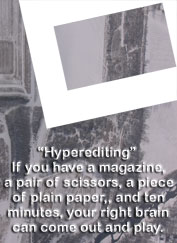.
The University of Michigan has a beautiful set of campuses. Here is a look at Angell Hall, with spring grass and flowering trees.
Graduations were happening, on the 6th. Each different school has its own graduation -- from the enormous School of Literature, Science, and the Arts, with thousands of graduates each spring, to the much smaller Law School, Medical School, School of Kinesiology......
Some of the smaller graduations took place on the 6th, I believe. I saw graduates in gowns, and lots of dressed-up family members.
Another happening in early May was a special exhibit in the Kelsey Museum of Archaeology about ancient Rome. On display were lots of artifacts from two structures in two cities (Pompeii and Oplontos) destroyed by volcanic eruptions in the first century of the Common Era.
One structure was an incredibly huge and elaborate private villa, which may have belonged to Poppaea, one of Nero's wives. The info said they have worked on excavating about 100 rooms -- less than half of the total number of rooms. That's a 60-meter swimming pool, at left......
A contemporary painting of the formal entrance to the villa.
I got to the museum after 3:00, only to learn that they close at 4:00. Unfortunate. So I was not able to poke around as much as I would have liked.
I thought it would have been helpful if the model had been labeled so we could tell which rooms we could see fragments of. Perhaps there was some of that sort of labeling, but I missed it, if there was.
I think this section of the model, below, shows the facade in the painting above (though the garden in front looks different......).
The exhibit included several iPads, each of which had a 3D image of what they believe some part of the villa looked like. You could have a 360-degree view from one point in a room, moving your finger across the tablet to rotate your view of the space.
This one is looking from one of the villa's rooms out at the swimming pool.
This is a tighter crop of the above. There were some fragments of statues in the exhibit. Some of those statues used to stand beside the pool. Here we can see statues and trees beside the pool.
The exhibit included many fragments of walls, showing something of the decoration. The big chunks are composed of smaller actual ancient bits, and the drawing on the wall indicates what they think the decoration looked like, back in the day.
A closer look.
Closer. In the previous one and the next one, you can see the individual fragments of the ancient wall, held in place by modern material.
Some lonesome fragments.
Lots of detail in these paintings -- shadows, highlights.....
When I took Roman Architecture, we learned that a lot of what is now thought to be true about Roman architecture has been gleaned from painting that embellished the insides of buildings. This is especially true of structures that would have been built of wood.
Paintings of buildings inform conclusions about structures which do not survive, and also give information about painted decoration of building exteriors.
Here's another tablet screen. This one shows a small courtyard. Note decorative painted striping on the pillar.
I'm always surprised when fragile objects have survived. Love the shape of this pitcher. If I recall correctly, it was about 10" tall.
Square-sided glass jug. I think it was about 8" tall.
Fragments of walls from a small room. Note tablet in lower left.
Here's a closer look at what we could see on the tablet screen. The texture of the wall in a bigger room, an opening into a smaller room..... Note the light place at right -- it's a small bit of window, looking out at the swimming pool.
Aphrodite. The striping behind her is similar to what was on the walls inside the villa from the painted pillar we saw on one of the tablets.
A small fragment of a mosaic floor. These tiles were about half an inch square.
Cute little bottle. I bet this feels good in your hand. It was about 4" tall, I think.
More glass. I bet the tallest of these objects was a bit over a foot tall.
I mentioned that two structures were represented in the exhibit. One was an incredibly luxurious villa. The other is thought to be something to do with the wine trade. Several individuals perished in this structure. Some of them wore gold jewelry and carried gold coins. Some may have been slaves.
Some very sumptuous objects were found in this building, in addition to wine amphorae, and a grain mill.
If we stop to think about what we believe to be true about the past, SO much depends on what we have happened to find. I expect our view of things is almost certainly skewed by what we have managed to discover.
There have to have been much that either did not survive, or has not yet been seen by modern eyes.
"The way it is" right now is hard enough to draw conclusions about. Looking at fragments of the past must necessarily give a very limited view of only part of what was reality.
.
Subscribe to:
Post Comments (Atom)







































No comments:
Post a Comment